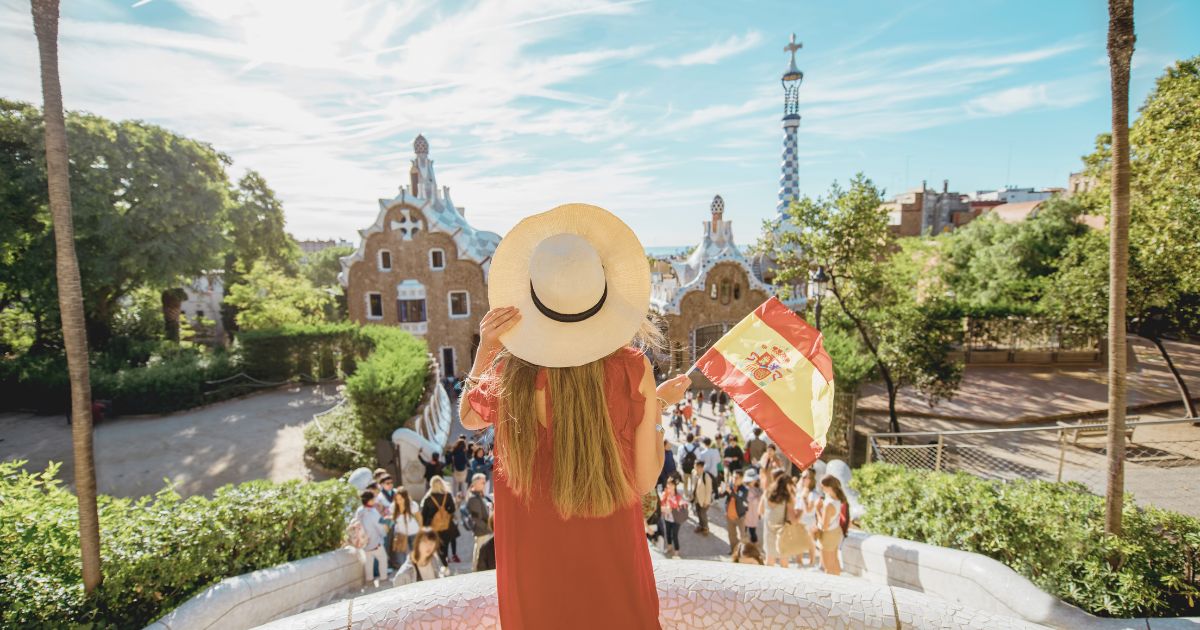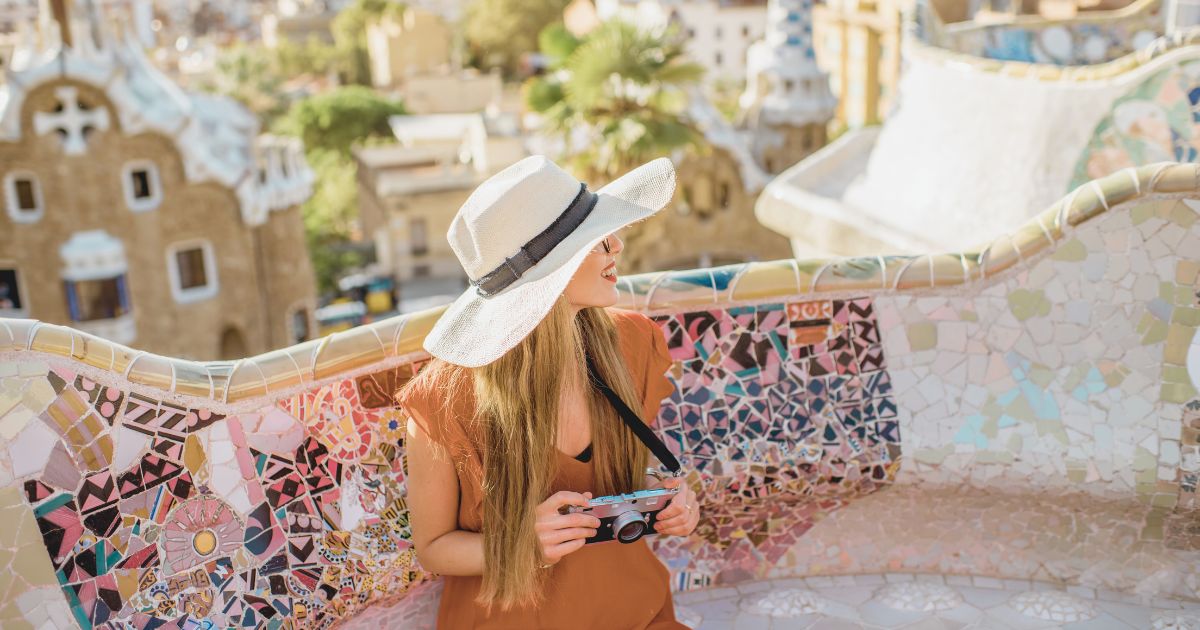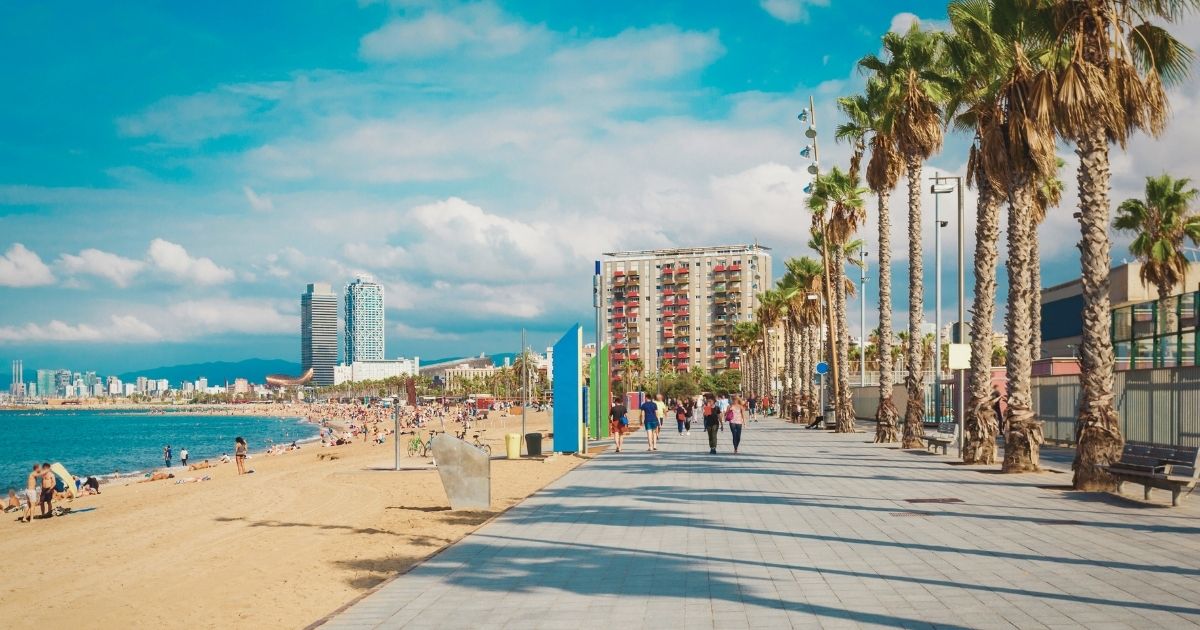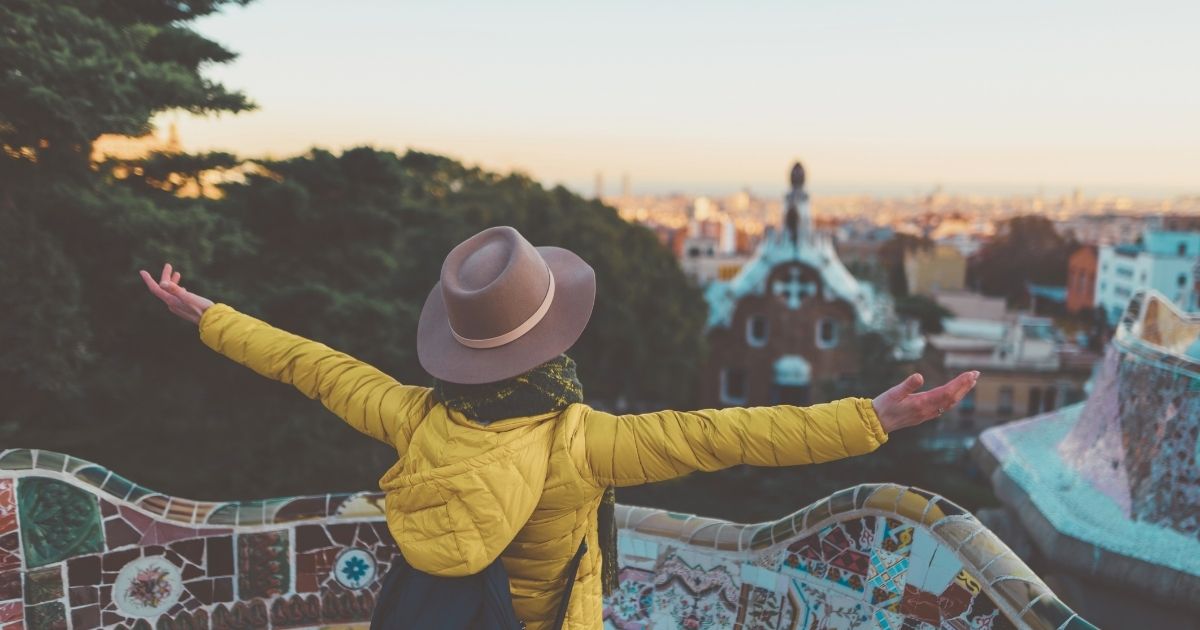Barcelona captivates digital nomads with its blend of Mediterranean charm, architectural wonders, and vibrant street life. Finding exciting things to do in Barcelona is never a challenge—the real difficulty lies in deciding which experiences to prioritize.
Whether you’re settling in for a month of remote work or exploring during your weekend downtime, Barcelona offers a treasure trove of experiences that go beyond the typical tourist itinerary. This guide will navigate you through the city’s most rewarding activities, from iconic landmarks to lesser-known local favorites.
Must-visit architectural wonders in Barcelona
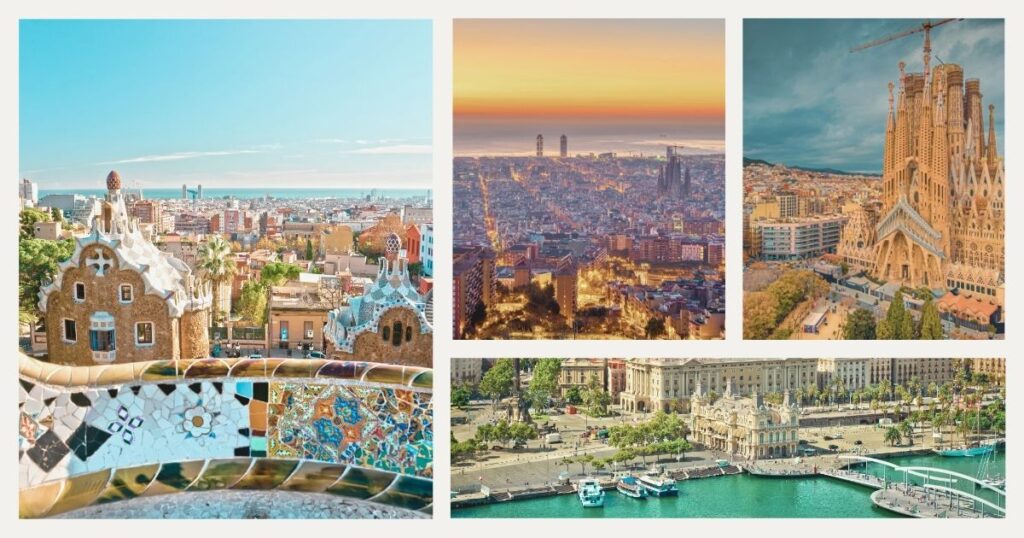
There’s no shortage of things to do in Barcelona. Its skyline tells the story of artistic evolution across centuries, creating a visual feast for architecture enthusiasts and casual observers alike.
1. Gaudí’s masterpieces: more than just La Sagrada Familia
While La Sagrada Familia rightfully claims its place as Barcelona’s crown jewel, Antoni Gaudí’s genius extends far beyond this iconic basilica. His architectural footprint transforms Barcelona into an outdoor gallery of modernist innovation.
La Sagrada Familia itself deserves dedicated exploration—its intricate facades tell biblical stories through stone, while the interior’s tree-like columns create a mesmerizing forest of light and color. Book your tickets online at least a week in advance, and choose an early morning or late afternoon slot to avoid the largest crowds.
Beyond this masterpiece, Park Güell offers a playful contrast with its colorful mosaics and undulating benches overlooking the city. Casa Batlló and Casa Milà (La Pedrera) showcase how Gaudí revolutionized residential architecture with organic forms inspired by nature.
🌟 Pro tip: purchase the Barcelona Gaudimania Pass if you plan to visit multiple Gaudí sites. It offers priority access to his major works and can save you both time and money compared to individual tickets.
2. Gothic Quarter: walking through medieval Barcelona
The Gothic Quarter (Barri Gòtic) transports you through centuries of Catalan history within its labyrinthine streets. This medieval neighborhood houses some of the most important things to do in Barcelona for history enthusiasts.
The Barcelona Cathedral, with its intricate Gothic façade and peaceful cloister housing 13 white geese, stands as the spiritual heart of old Barcelona. Nearby, Plaça del Rei offers a glimpse into the city’s Roman origins and medieval glory.
As you wander these narrow stone streets, look up to spot hidden details—gargoyles, ancient doorways, and tiny plazas that open unexpectedly before you. The quarter is also home to remnants of the old Roman wall that once encircled Barcino, the original Roman settlement.
💡 Did you know? Many “Gothic” elements in the quarter were actually added during the early 20th century as part of an urban renewal project designed to highlight Barcelona’s medieval heritage for the 1929 International Exhibition.
Culinary experiences that define Barcelona

Barcelona’s food scene offers a blend of traditional Catalan cuisine and innovative gastronomy. For digital nomads, exploring the city’s culinary landscape provides not just sustenance, but a window into local culture.
3. Market adventures: La Boqueria and beyond
La Boqueria Market on Las Ramblas might be the most famous food market in Barcelona, but it represents just the beginning of the city’s market culture. These vibrant spaces offer both an authentic shopping experience and excellent casual dining options: without a doubt one of the top things to do in Barcelona.
At La Boqueria, start your day with fresh fruit smoothies while watching vendors arrange their colorful displays. For lunch, the small bars inside serve some of the freshest seafood tapas in the city. However, for a less touristy experience, explore Mercat de Sant Antoni or Mercat de la Concepció, where locals shop daily.
These markets provide perfect opportunities to stock your nomad apartment with fresh ingredients or sample prepared foods that showcase Catalan culinary traditions.
4. Tapas crawl: the social art of small-plate dining
No list of things to do in Barcelona would be complete without a proper tapas experience. This small-plate dining tradition encourages exploration, social eating, and trying multiple dishes in one evening.
The El Born and Poble Sec neighborhoods offer some of the most authentic tapas bars, where you can sample classics like patatas bravas (fried potatoes with spicy sauce), bombas (potato croquettes with aioli), and pan con tomate (bread rubbed with tomato, olive oil, and salt).
For the full experience, embrace the Spanish custom of a tapas crawl—visiting several establishments in one evening, enjoying a few plates at each. This progressive dining approach allows you to experience different specialties while discovering various corners of the city.
Digital nomad-specific activities in Barcelona
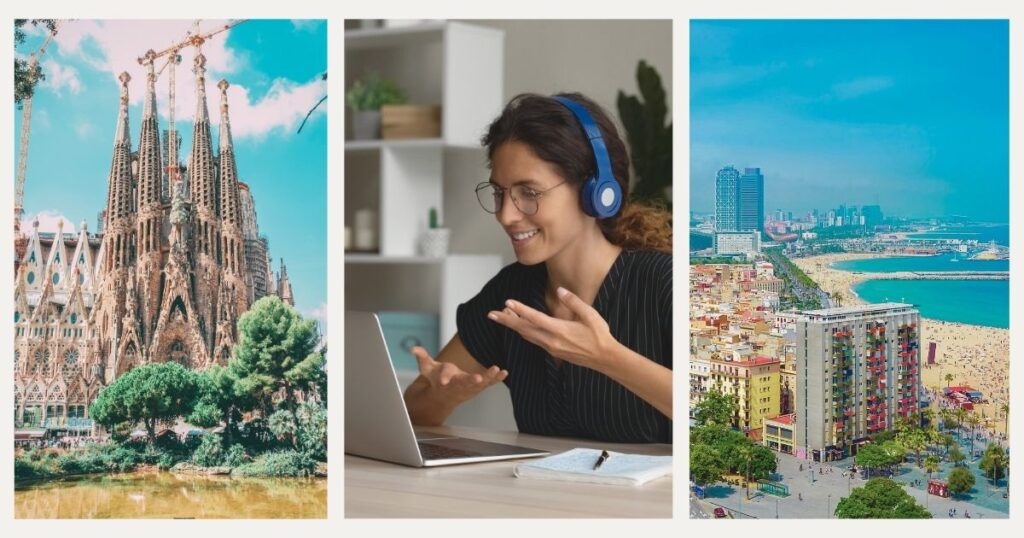
Barcelona has emerged as a leading digital nomad hub in Europe, offering infrastructure and experiences tailored to remote professionals.
5. Coworking spaces and digital nomad communities
Barcelona boasts some of Europe’s most innovative coworking environments, where functionality meets inspiring design. These spaces provide not just reliable infrastructure but opportunities to connect with like-minded professionals.
Spaces like OneCoWork, with its seafront location, and Aticco, with multiple locations across the city, offer high-speed internet, meeting rooms, and networking events specifically designed for international remote workers. Many spaces also organize professional workshops and social activities that help newcomers integrate into Barcelona’s digital ecosystem.
When selecting a coworking space, consider factors beyond just location and amenities. Look for communities that align with your professional interests—some spaces cater to creative industries, while others focus on tech startups or sustainability-focused ventures.
6. Networking events and skill-building workshops
Beyond formal coworking spaces, Barcelona hosts numerous events where digital nomads can expand both their social and professional connections.
Regular events like Barcelona Digital Nomads meetups, language exchange nights, and industry-specific gatherings provide opportunities to build your local network. Additionally, organizations like Startup Grind Barcelona and Barcelona Tech City host talks and workshops featuring local and international entrepreneurs.
Off-the-beaten-path experiences in Barcelona
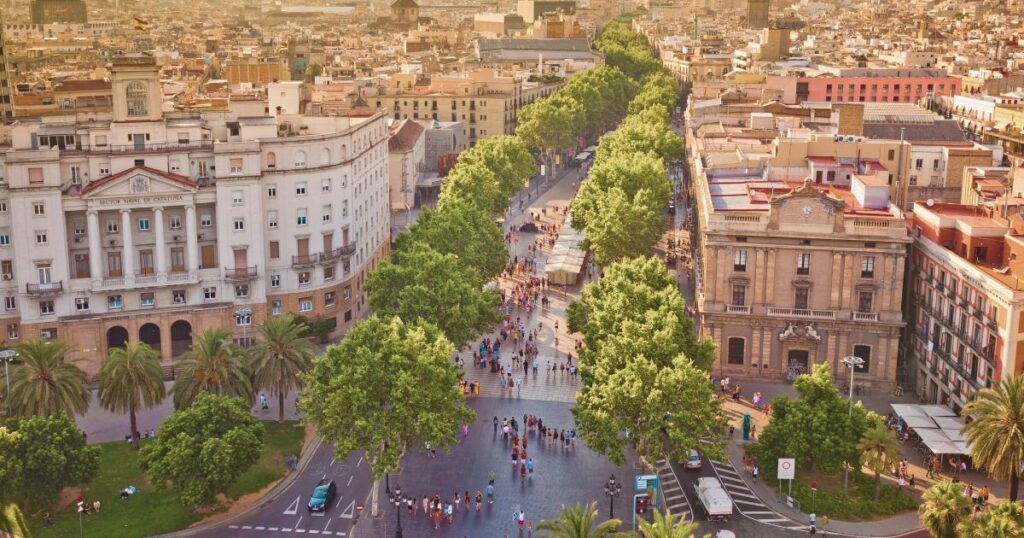
While iconic attractions deserve their fame, some of the most memorable things to do in Barcelona lie beyond the standard tourist circuit. These experiences offer deeper insights into local culture and provide respite from crowded hotspots.
7. Hidden gardens and lesser-known viewpoints
Barcelona’s dramatic topography creates numerous elevated vantage points that offer spectacular panoramas without the crowds of more famous lookouts like Park Güell.
The Bunkers del Carmel, former anti-aircraft fortifications from the Spanish Civil War, provide a 360-degree view of the city that locals consider superior to more publicized viewpoints. Bring a simple picnic around sunset for a truly memorable experience.
For tranquil green spaces, explore the Parc del Laberint d’Horta, featuring a historic hedge maze and neoclassical gardens that date back to the 18th century.
8. Neighborhood exploration beyond the center
Things to do in Barcelona can vary greatly, as each neighborhood possesses its own distinctive character, offering unique insights into different aspects of Catalan culture.
Gràcia, once an independent town before being absorbed into Barcelona, maintains its village-like atmosphere with pedestrian plazas where locals gather for coffee or vermouth.
Poblenou represents Barcelona’s creative reinvention, with former factories now housing art studios, design agencies, and innovative restaurants. This neighborhood exemplifies the city’s transformation from industrial powerhouse to creative hub.
Technology and connectivity infrastructure for nomads
Maintaining reliable connectivity forms the backbone of any digital nomad’s experience, and Barcelona offers strong technological infrastructure to support remote work requirements.
Staying connected: internet solutions and digital infrastructure
Barcelona provides excellent connectivity options across the city, with fiber-optic networks available in most urban areas and reliable mobile coverage throughout. Most cafés, restaurants, and public spaces offer free Wi-Fi, though quality can vary.
For secure and consistent connectivity, consider obtaining an eSIM before arrival. This provides immediate access to local networks without the hassle of purchasing a physical SIM card upon arrival.
🌟 Pro tip: ensure seamless connectivity with Holafly’s eSIM, offering reliable internet access across Spain. Their flexible plans allow digital nomads to stay connected whether working from a bustling Barcelona coworking space or a quiet seaside café in Barceloneta.
For longer stays, local providers like Movistar, Vodafone, and Orange offer prepaid and contract plans with generous data allowances.
💡 Did you know? Barcelona was among Europe’s first major cities to implement extensive free public Wi-Fi, with hundreds of hotspots available throughout public spaces, parks, and transportation hubs as part of the city’s smart city initiative.
Practical tips for exploring Barcelona
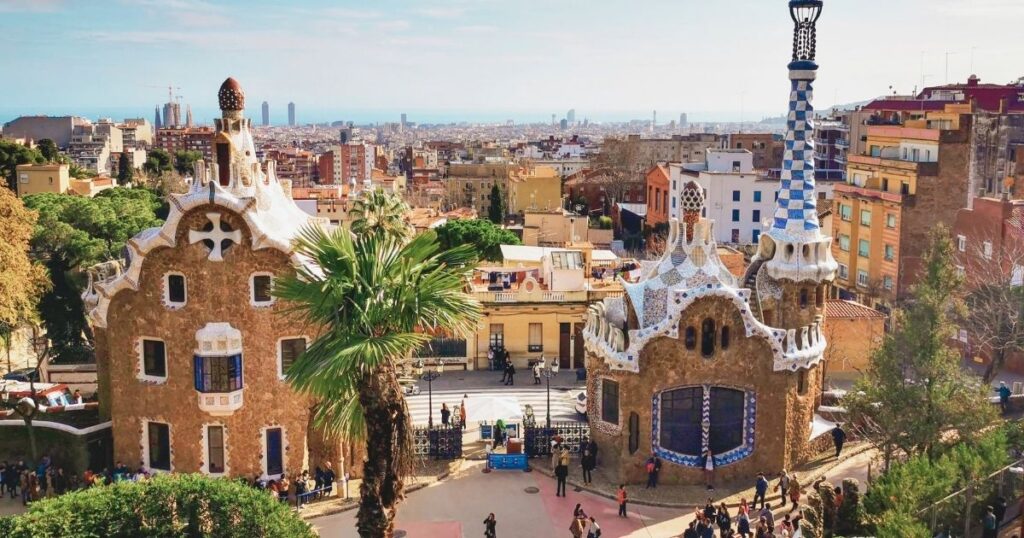
Navigating Barcelona effectively requires some practical knowledge that can enhance your experience while avoiding common pitfalls.
Transportation hacks for digital nomads
Barcelona’s comprehensive public transportation system makes exploring the city straightforward, even for newcomers. The integrated network includes metro, buses, trams, and regional trains that can be accessed with a single ticket or travel card.
The T-Casual card offers 10 journeys for approximately €11.35, representing significant savings over single tickets. For longer stays, consider the personalized T-Usual card, which provides unlimited travel for 30 days at around €40.
For exploring at your own pace, the city’s bicycle sharing system (Bicing) offers an excellent option, though it requires residency registration. Alternatively, numerous bike rental shops provide daily or weekly options, and Barcelona’s expanding network of bike lanes makes cycling both safe and efficient.
Seasonal events worth planning around
Barcelona’s cultural calendar influences both the city’s atmosphere and practical considerations like accommodation availability and pricing.
Summer brings major music festivals like Primavera Sound and Sónar, transforming the city into a global music destination. However, this period also sees peak tourism and higher accommodation costs.
September offers particularly pleasant conditions, with warm weather, fewer tourists, and major cultural events like La Mercè festival, which fills the city with street performances, traditional Catalan displays, and music for several days around September 24th.
Final thoughts: creating your perfect Barcelona experience
Barcelona offers such diversity that no single itinerary could capture all its possibilities. The best approach involves blending iconic experiences with personal discoveries that match your unique interests as a digital nomad.
Balance structured exploration of famous landmarks with unplanned wandering. Some of Barcelona’s most magical moments occur when you turn down an unmarked alley to discover a tiny plaza with a centuries-old church, or when you follow the sound of live music to find locals dancing sardanas on a Sunday morning.
While Barcelona offers countless things to see and do, the city’s greatest gift to digital nomads might be its lifestyle—the balance of productivity and pleasure, tradition and innovation. For more insights on making the most of your time in Spain, explore our guide to applying for the Spanish digital nomad visa to extend your stay in this captivating city.
Ready to make Barcelona your next digital nomad destination? Let Nomada simplify your journey with practical advice and stress-free solutions 🌍
Frequently asked questions about things to do in Barcelona
Barcelona offers numerous free experiences, including strolling La Rambla, visiting beaches like Barceloneta, exploring the Gothic Quarter’s historic streets, and enjoying public art throughout the city. Many museums offer free entry on Sunday afternoons or the first Sunday of each month. Parks like Ciutadella and Montjuïc also provide beautiful spaces to relax without spending a euro.
Spring (April-June) and fall (September-October) offer ideal conditions with pleasant temperatures, fewer tourists than summer, and active local cultural calendars. These shoulder seasons provide better accommodation rates while still allowing enjoyment of outdoor activities and beaches.
Barcelona is generally safe for digital nomads, with violent crime being rare. However, the city is known for pickpocketing and petty theft, particularly in tourist areas. Take normal precautions like using secure bags, being mindful of belongings in crowded places, and avoiding displaying expensive equipment unnecessarily.
While you could see the major highlights in 3-4 days, digital nomads benefit from slower exploration over weeks or months. A month allows for thorough exploration of different neighborhoods, day trips to nearby destinations like Montserrat or Costa Brava, and establishing productive work routines.
